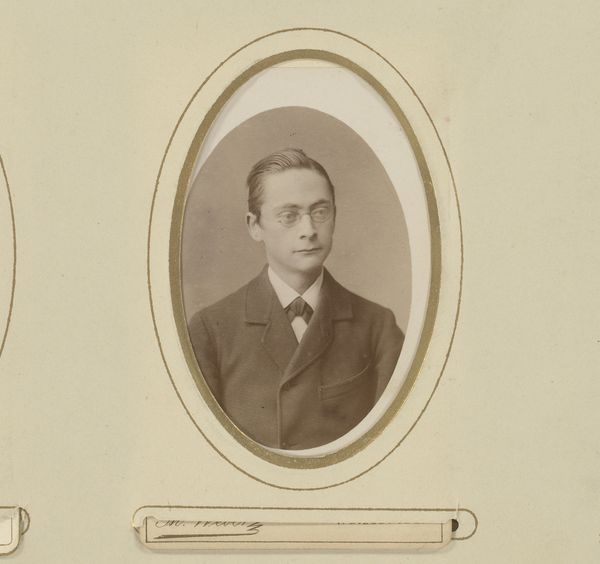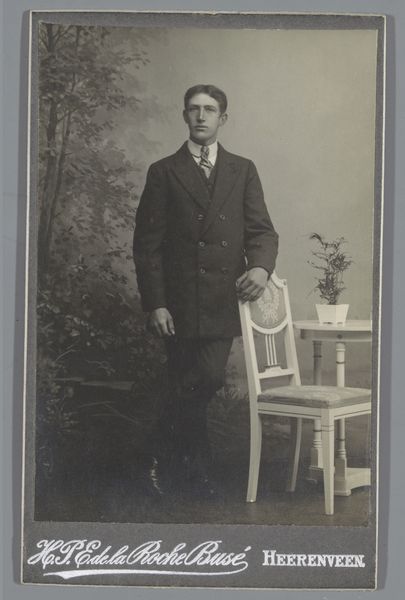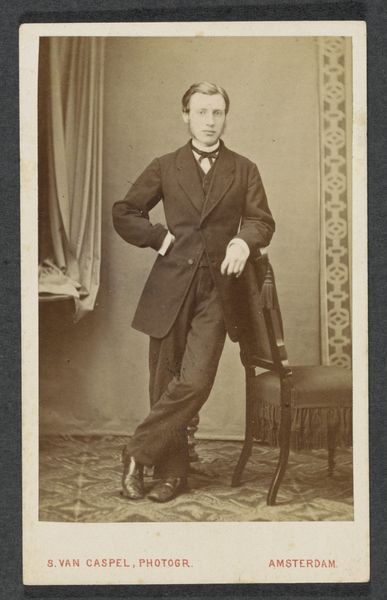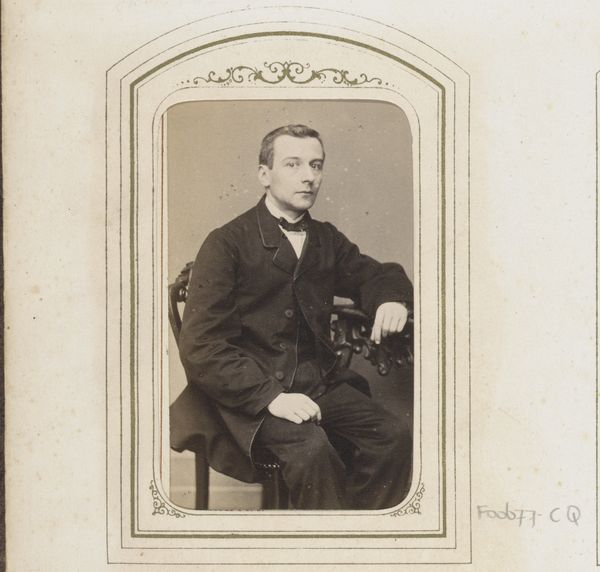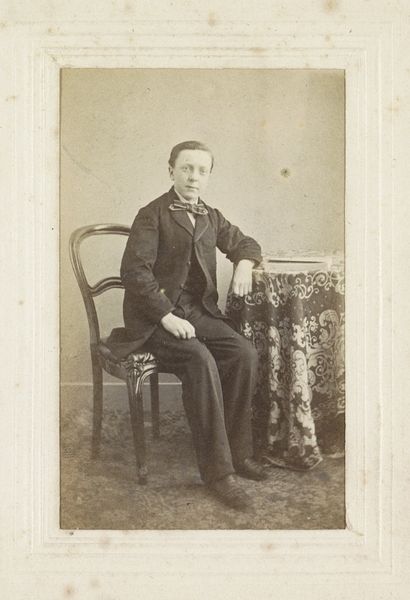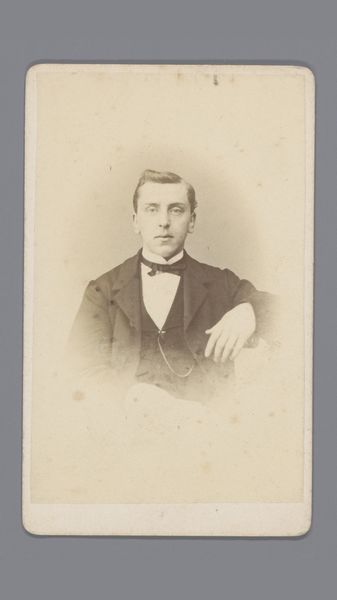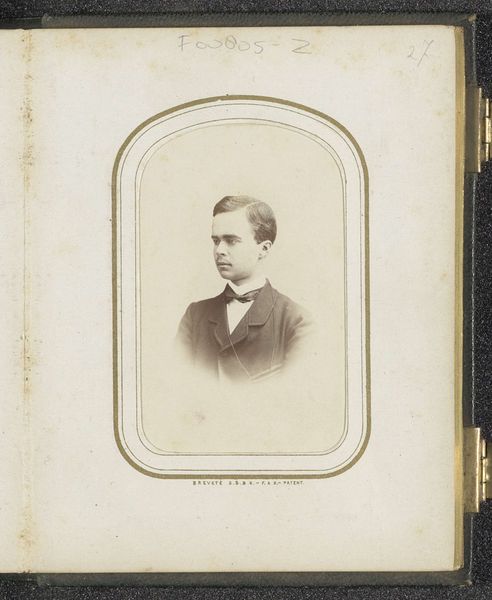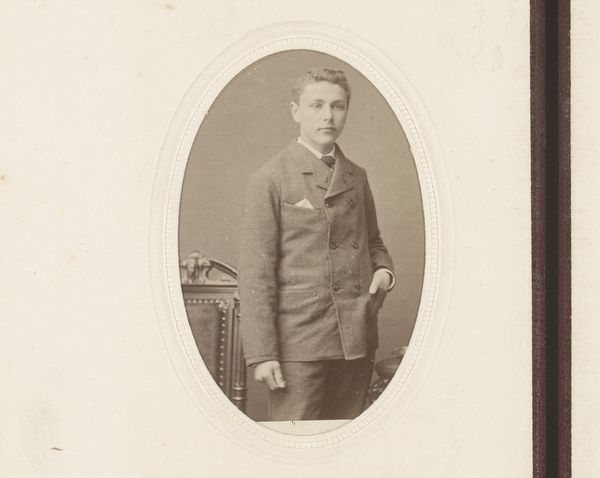
photography
#
portrait
#
photography
#
historical photography
#
fine art portrait
#
realism
Dimensions: height 137 mm, width 96 mm
Copyright: Rijks Museum: Open Domain
Curator: This portrait, taken between 1880 and 1920 by Spencer & Wilson, captures a standing young man in the realist style that was so popular during that era. Let’s dive into it. Editor: Oh, I immediately feel a sense of formality, almost constraint. It’s that perfect posture, the tightly knotted tie, a tiny hint of melancholy around the eyes. What was he thinking about, I wonder? Curator: These types of studio portraits were often exercises in controlled self-representation, weren't they? Social class, aspirations—photography presented a way for the upwardly mobile to participate in these narratives. It begs the question, what performance of self are we seeing, and what socioeconomic dynamics are at play? Editor: Absolutely. He seems self-aware. It's interesting to think about photography becoming democratized and who was given access to it. It allowed folks like this guy to engage in their own… well, almost PR campaign, right? Constructing how they want to be seen. He is stylish! Check out the watch chain draped so deliberately. Curator: The attention to detail does point to that self-conscious performance. And, given the studio setting, there's a level of artificiality—the floral backdrop contrasting against what I can assume is his stiff formal jacket—all signs point to him intentionally constructing and preserving an image for posterity. Editor: It's more than just clothes, you know? The slightly softened focus, a touch of shadow on his face, he wanted to make sure we remember his thoughtful essence... I wonder who *he* really was... if only photographs could talk! Curator: That tension between manufactured image and possible authenticity is what makes these portraits so enduringly compelling. And how portraits were a very male-centered genre, in its essence? To study this work, we might even begin a critical intersectional approach. Editor: This reminds me that photographs are far from neutral, you know. They echo society's aspirations as much as any painter's canvas did. This young man seems so aware, a touch burdened—what does he make of that heavy velvet chair? Curator: Perhaps more questions than answers, but his is a study that invites contemplation. Editor: Totally. So cool to just jump back into the late 1800's. Snap! We're there.
Comments
No comments
Be the first to comment and join the conversation on the ultimate creative platform.
